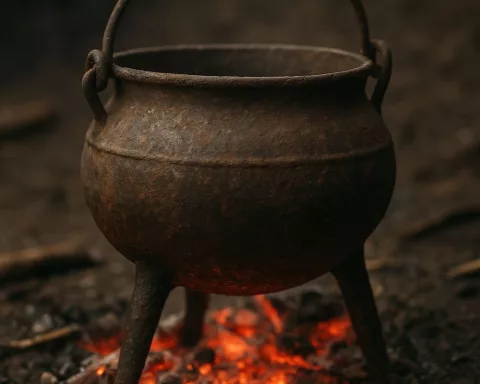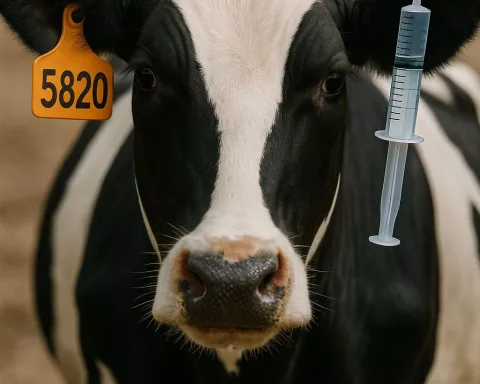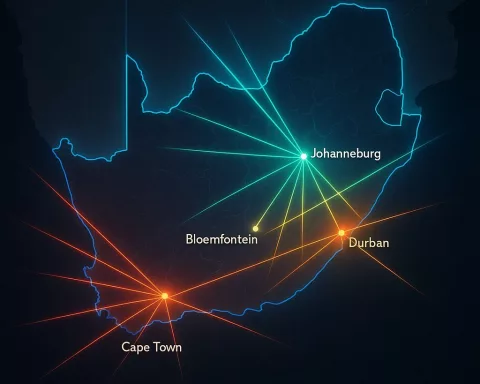In 2025, the South African Rand took a historic nosedive, reaching its lowest point ever against the euro and pound. Political chaos from a controversial national budget, along with new US tariffs, caused panic among investors, leading them to pull money out of the country. On April 9, the rand fell to R21.81/€ and above R25/£, creating a wave of uncertainty and rising inflation in South Africa. This crisis reflects not only economic struggles but also the deep political issues within the nation, urging everyone to unite for a better future.
What caused the South African Rand’s historic plunge in 2025?
The South African Rand’s historic plunge in 2025 was driven by a combination of domestic political instability, stemming from a contentious national budget, and external economic pressures, including new US tariffs. This turmoil led to a significant market reaction, triggering a loss of investor confidence and a dramatic currency decline.
A Record Low for the Rand
On April 9, 2025, the South African rand plummeted to its lowest exchange rates ever recorded against both the euro and the British pound. The currency stood at R21.81/€ and briefly fell to R21.93/€ during overnight trading. This marked a historic nadir, surpassing its previous low of R20.63/€ during the height of the Covid-19 pandemic. Additionally, the rand breached the R25/£ mark against the pound, sending ripples through the nation’s financial markets.
The drastic decline of the rand can be attributed to a mixture of domestic political instability and external economic pressures. The catalyst for these troubles was the contentious national budget passed on April 2, 2025. This budget cast a shadow of uncertainty over the stability of the Government of National Unity (GNU). The Democratic Alliance (DA) raised concerns about its future in the coalition, stoking fears of a political crisis that could further destabilize the nation’s economic future.
The political instability triggered a significant market reaction. On the day the budget was approved, the Johannesburg Stock Exchange (JSE) saw a dramatic 4.5% drop. This downturn heavily impacted financial and mining stocks and weakened the rand not just against the euro, but also against other emerging market currencies. Investors, alarmed by South Africa’s internal discord, began retracting their investments from riskier assets, thus worsening the rand’s downward trajectory.
External Economic Pressures
On the same day the budget was passed, US President Donald Trump introduced new tariffs, adding to the global market volatility. His protectionist trade policies reverberated across international financial landscapes, prompting investors to retreat from emerging market currencies, including the rand. As a result, the rand experienced additional losses against major currencies such as the US dollar, euro, and pound. Conversely, safe-haven currencies like the Swiss franc and Japanese yen saw a rise as investors sought refuge from the market instability.
By April 9, the rand had reached an unprecedented low against the pound, trading above R25/£, and continued to hover near historic lows against the US dollar. The consequences of this dramatic fall are expected to inflate the cost of imports, leading to higher inflation rates—a challenge that will weigh heavily on the South African economy and its citizens.
The ramifications of this currency crisis are extensive. With inflation on the rise and living costs increasing, South Africa faces a formidable challenge. The government must act swiftly and decisively to stabilize the currency and restore confidence in the economy before the situation further deteriorates.
Political and Economic Interplay
The decline of the rand highlights the intricate interplay between political maneuvers and economic stability. Political friction within the GNU, combined with the global repercussions of US trade policies, created a perfect storm for the currency’s downfall. This scenario underscores the fragility of emerging market economies, which are often more susceptible to both domestic and international perturbations.
Reflecting on the rand’s plunge, one cannot help but draw parallels to historical instances where political instability precipitated economic crises. The turbulent reign of the Weimar Republic in Germany post-World War I, for example, saw hyperinflation wreak havoc on the economy, driving the value of the Mark to near worthlessness. Similarly, the rand’s current plight serves as a stark reminder of the powerful influence political cohesion—or the lack thereof—wields over economic stability.
Moreover, the cultural and historical fabric of South Africa adds another layer of complexity to this economic narrative. South Africa’s rich, albeit tumultuous, history has always been a tapestry of resilience and struggle. From the era of apartheid to the democratic transition, the nation has weathered significant storms. Today, the rand’s depreciation echoes yet another chapter in this ongoing saga.
Cultural Reflections and Economic Theories
Artistic movements, particularly during times of national crisis, often reflect and respond to the socio-economic climate. During the Great Depression, American artists of the Ashcan School depicted the harsh realities of urban life, capturing the essence of economic despair. Similarly, South African artists have long used their craft to comment on and critique the socio-political landscape. The current economic turmoil may very well inspire a new wave of artistic expression, mirroring the public’s sentiment and struggle.
The current financial debacle also calls to mind the theories of renowned economists like John Maynard Keynes, who advocated for government intervention during economic downturns. Keynesian economics would suggest that the South African government must actively engage in fiscal measures to mitigate the crisis. This could involve stimulus packages aimed at boosting economic activity and restoring investor confidence.
In the midst of this economic turbulence, the resilience of the South African people remains a beacon of hope. The nation has demonstrated an uncanny ability to adapt and persevere through adversity. Civil society, grassroots movements, and the entrepreneurial spirit will undoubtedly play pivotal roles in navigating through these challenging times.
A Call to Action
While the rand’s historic plunge is undoubtedly a cause for concern, it also serves as an opportunity for reflection and action. The convergence of political, economic, and cultural currents has brought South Africa to a critical juncture. How the nation responds to this crisis will shape its future trajectory.
This currency crisis is not merely an economic event; it is a reflection of the broader socio-political dynamics at play. It is a call to action for the government, policymakers, and citizens alike to come together and forge a path toward stability and prosperity. The road ahead may be fraught with challenges, but the indomitable spirit of South Africa will undoubtedly rise to meet them.
“`markdown
FAQ on the South African Rand’s Historic Plunge
What caused the South African Rand’s historic plunge in 2025?
The South African Rand’s historic plunge in 2025 was primarily driven by domestic political instability due to a controversial national budget and external economic pressures, including new US tariffs. This turmoil led to a loss of investor confidence, resulting in a significant decline in the currency’s value.
What were the exchange rates of the Rand on April 9, 2025?
On April 9, 2025, the South African Rand reached its lowest exchange rates ever, trading at R21.81 against the euro and above R25 against the British pound. This marked a new historic low, surpassing its previous nadir during the Covid-19 pandemic.
How did the national budget impact the Rand’s value?
The contentious national budget passed on April 2, 2025, cast doubt on the stability of the Government of National Unity (GNU) and raised concerns about its future. This uncertainty triggered a panic among investors, leading to significant market reactions, including a dramatic drop of 4.5% in the Johannesburg Stock Exchange (JSE) and a further decline in the Rand.
What external factors contributed to the Rand’s decline?
The introduction of new tariffs by US President Donald Trump on the same day the budget was passed added to the global market volatility. This situation prompted investors to withdraw from emerging markets, further weakening the Rand against major currencies like the US dollar, euro, and pound.
What are the potential consequences of the Rand’s decline for South Africa?
The drastic decline of the Rand is expected to inflate the cost of imports, leading to higher inflation rates and increasing living costs for South Africans. This economic challenge will require swift government action to stabilize the currency and restore investor confidence.
What does the future hold for the South African economy?
The current economic turmoil serves as a reflection of deeper socio-political dynamics within the nation. The government’s response to this crisis will be critical in shaping the future trajectory of the South African economy. There is hope that the resilience of the South African people, along with civil society and grassroots movements, will play an essential role in navigating these challenging times.
“`












